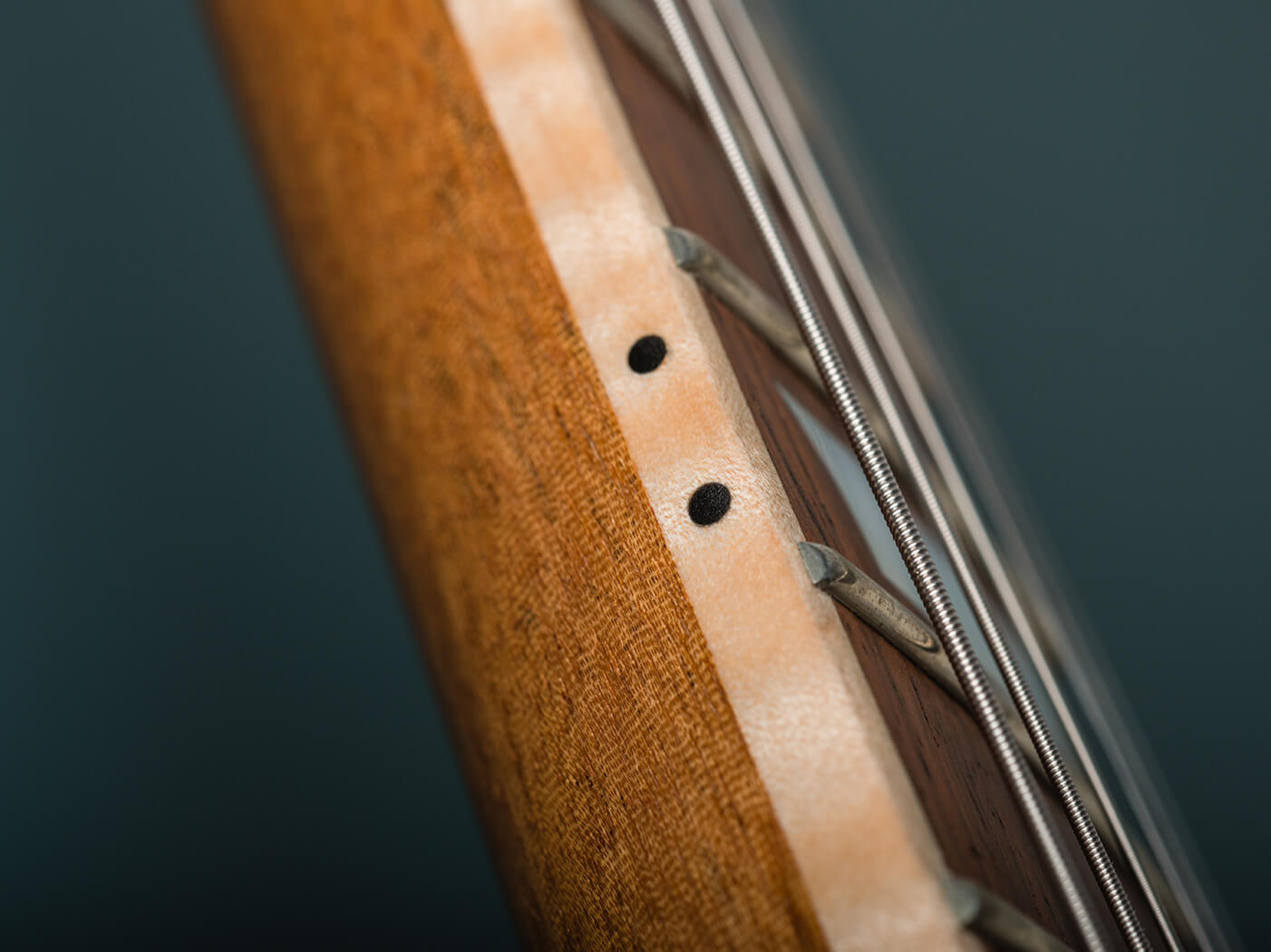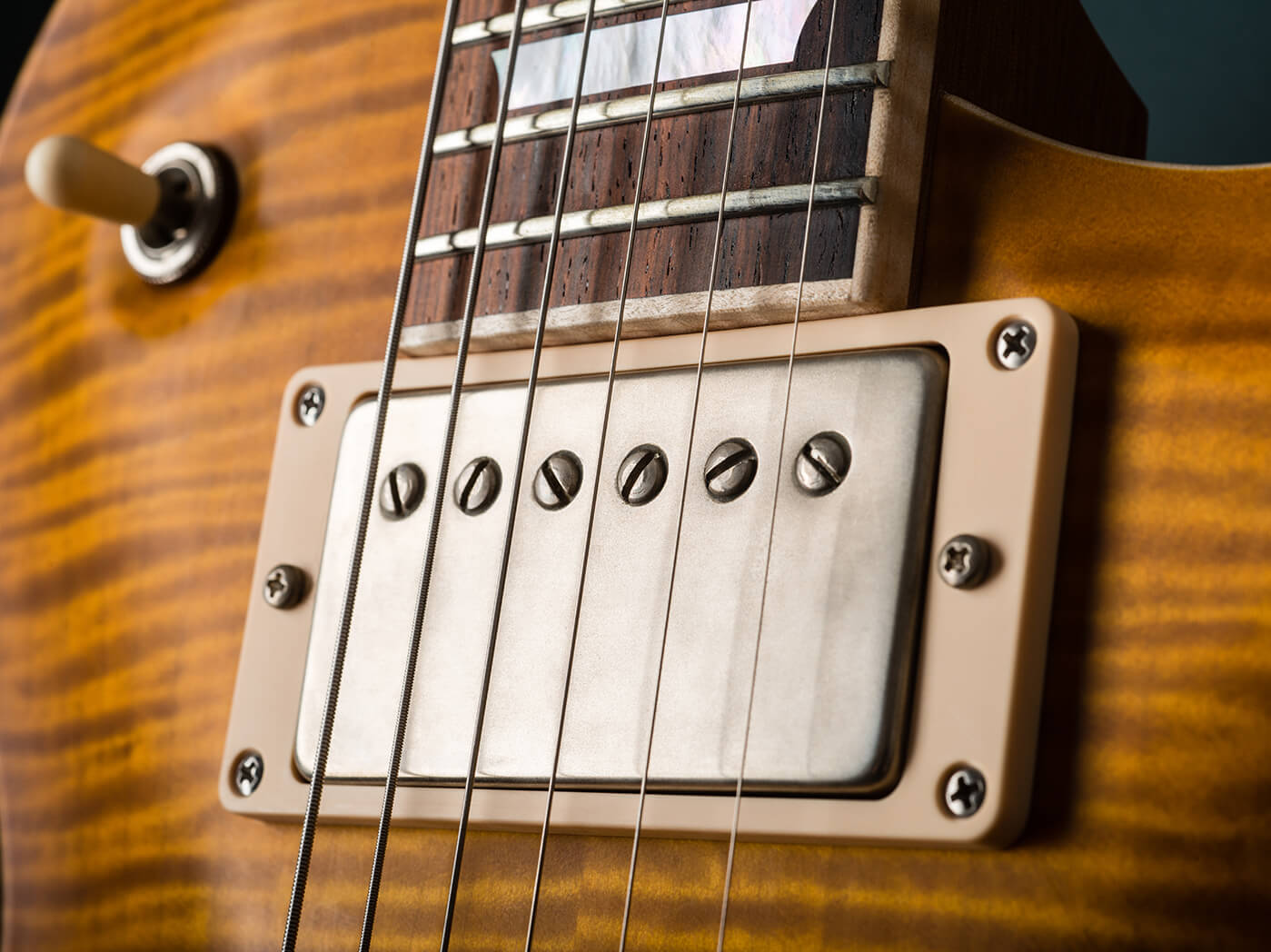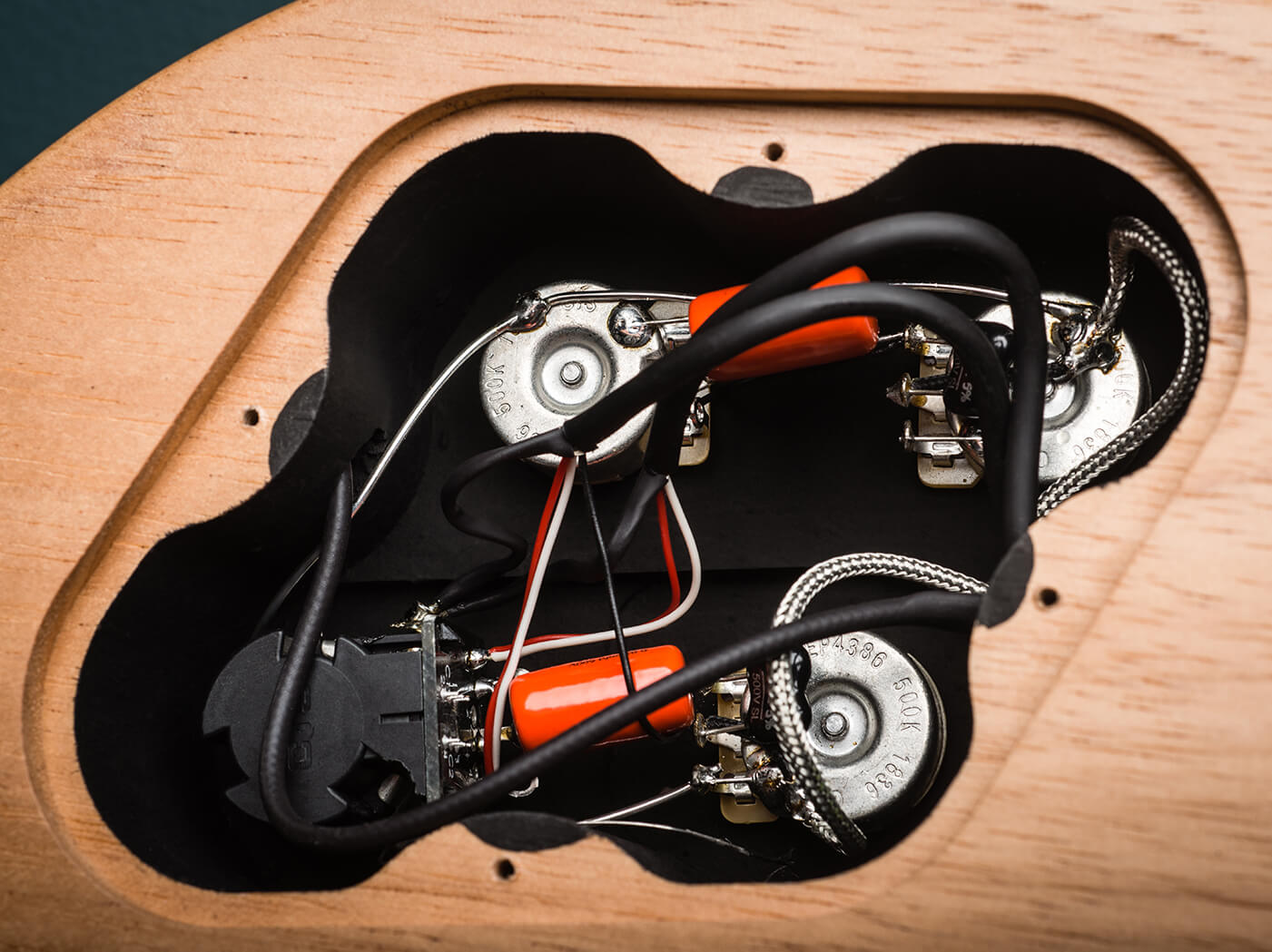Related Tags
Review: Nik Huber Orca ’59
Nik Huber’s small team of eight builds around 240 guitars every year in a workshop just outside the German city of Frankfurt. When it comes to boutique single-cuts, this is one of the very best.
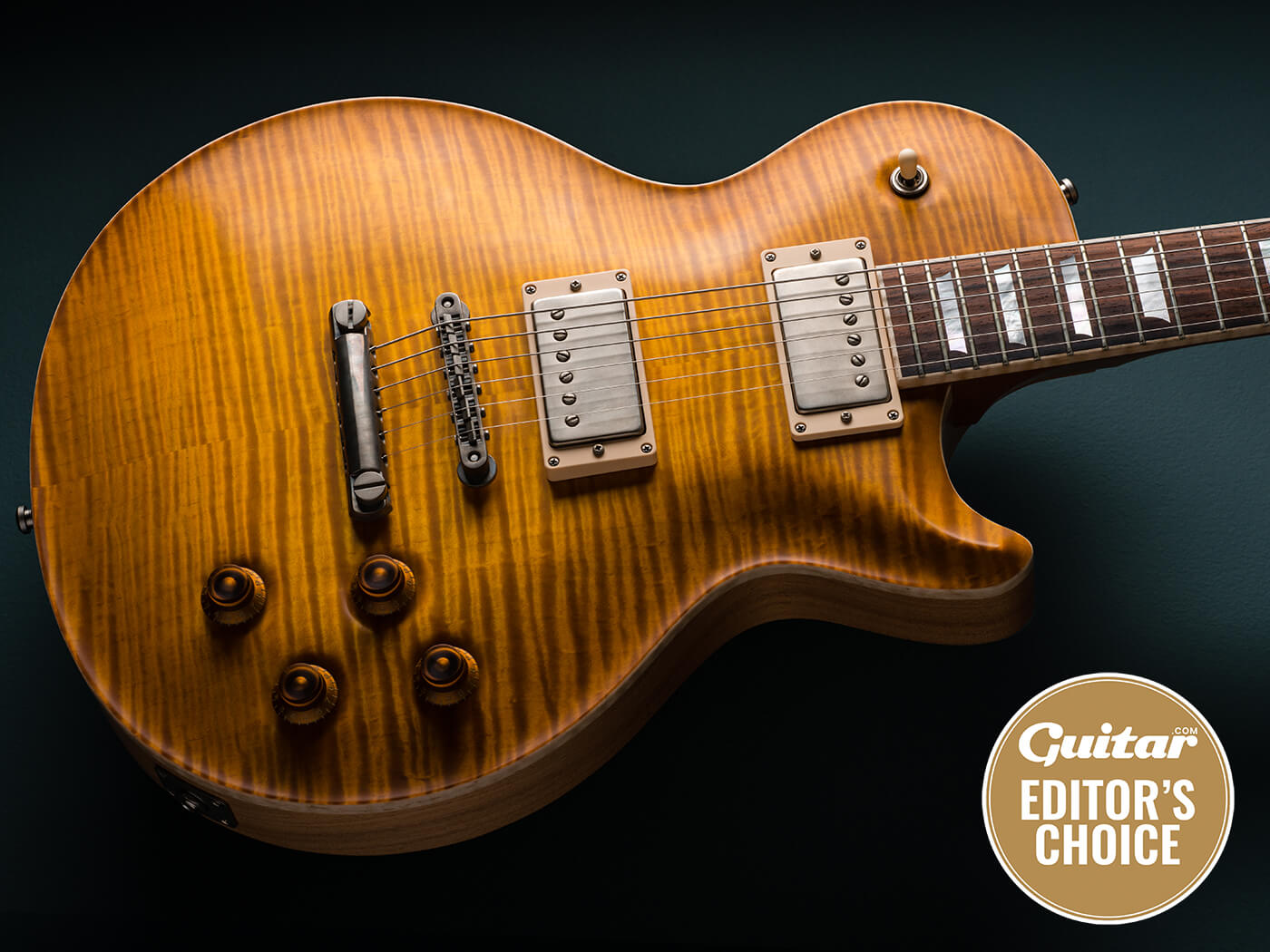
Review Overview
Our rating
9
Our verdict
Although Nik Huber’s Orca ’59 model has been around for a while, it’s newly available via The North American Guitar in London. On opening this gorgeous single-cutaway electric’s smart grey hard case, German luthier Huber’s inspiration is clear as day, but there are many refinements that help make this much more than just a slavish Burst tribute.
The Orca’s incredible figured top is described as “exceptionally curly maple” and it’s difficult to disagree. The three-dimensional, near-holographic nature of the flame is accentuated by the Faded Sunburst and deep dish carve, but it’s not all bling; the semi-gloss nitrocellulose finish on the top, aged metal parts and satin open-pore back and neck ensure this Orca feels like it belongs in the wild.
The set mahogany neck features a flame maple-bound Brazilian rosewood fingerboard with rich reddish and dark-brown hues. The neck profile is a noticeably deeper palmful than any of the genuine 1959 Les Pauls we’ve played; yet it’s comfortably round-shouldered and upper-fret access is aided by an elegant neck join with a large scoop of wood dressed away from the heel.
The full-thickness body measures approximately 57mm from the back to the apex of the carved top. You might expect the primary ingredient to be mahogany, but this example is hewn from two centre-joined sections of specially ordered lightweight Spanish cedar. Neither Spanish nor a cedar, it’s actually a member of the Meliaceae (mahogany) family.
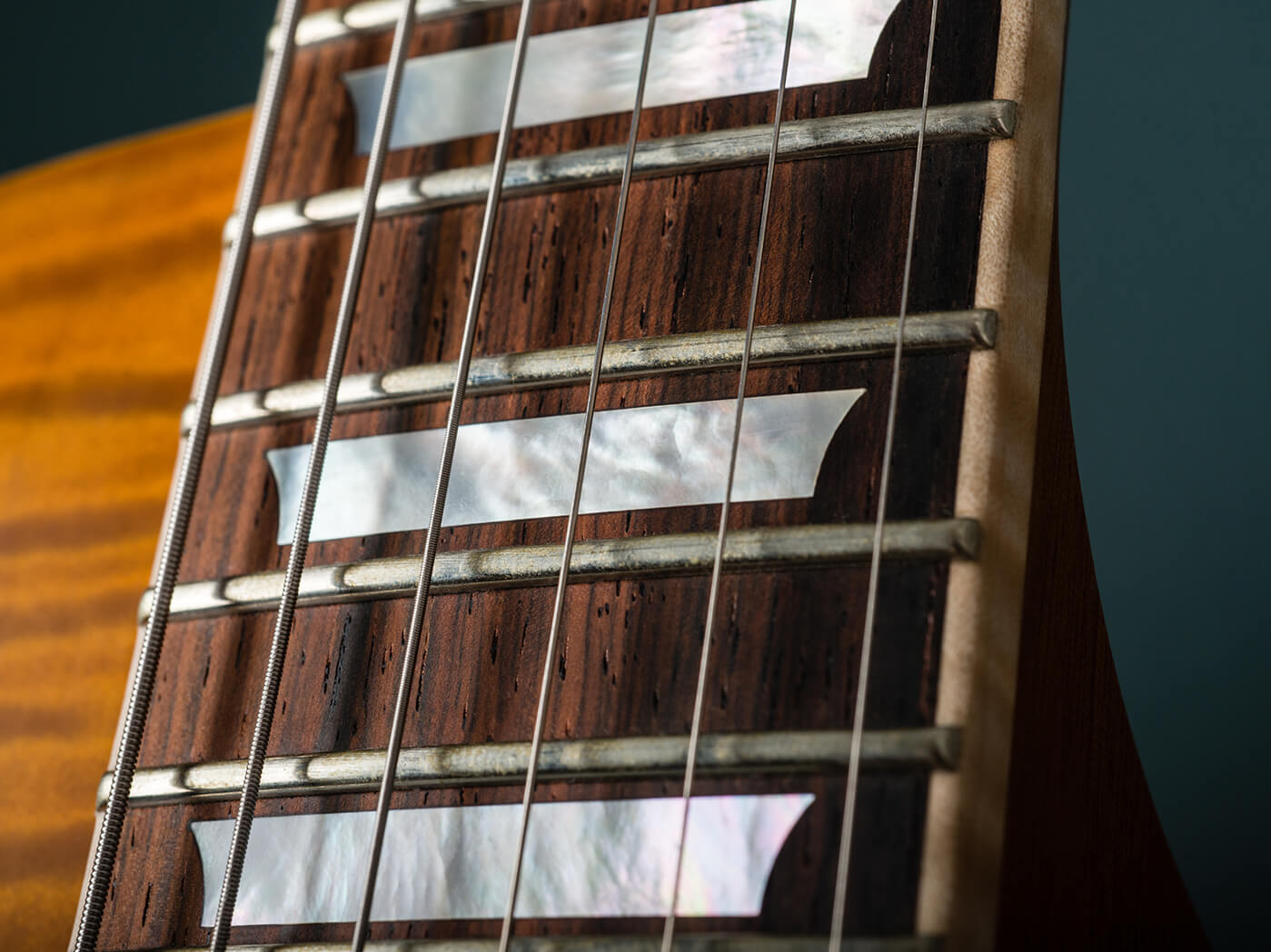
Another point of distinction is provided by the subtle belly contour at the rear. Dig deeper and Huber has added yet more of his own special seasoning to this seemingly familiar recipe: a PRS-style 25-inch scale length is preferred, while the compound fingerboard radius transitions from 10-14 inches and provides a fluid playing surface.
The nut is polished bone rather than vintage-style nylon and though the Häussel units are PAF-style humbuckers with nickel covers, pulling up the Orca’s neck tone control activates a coil-split on both pickups.
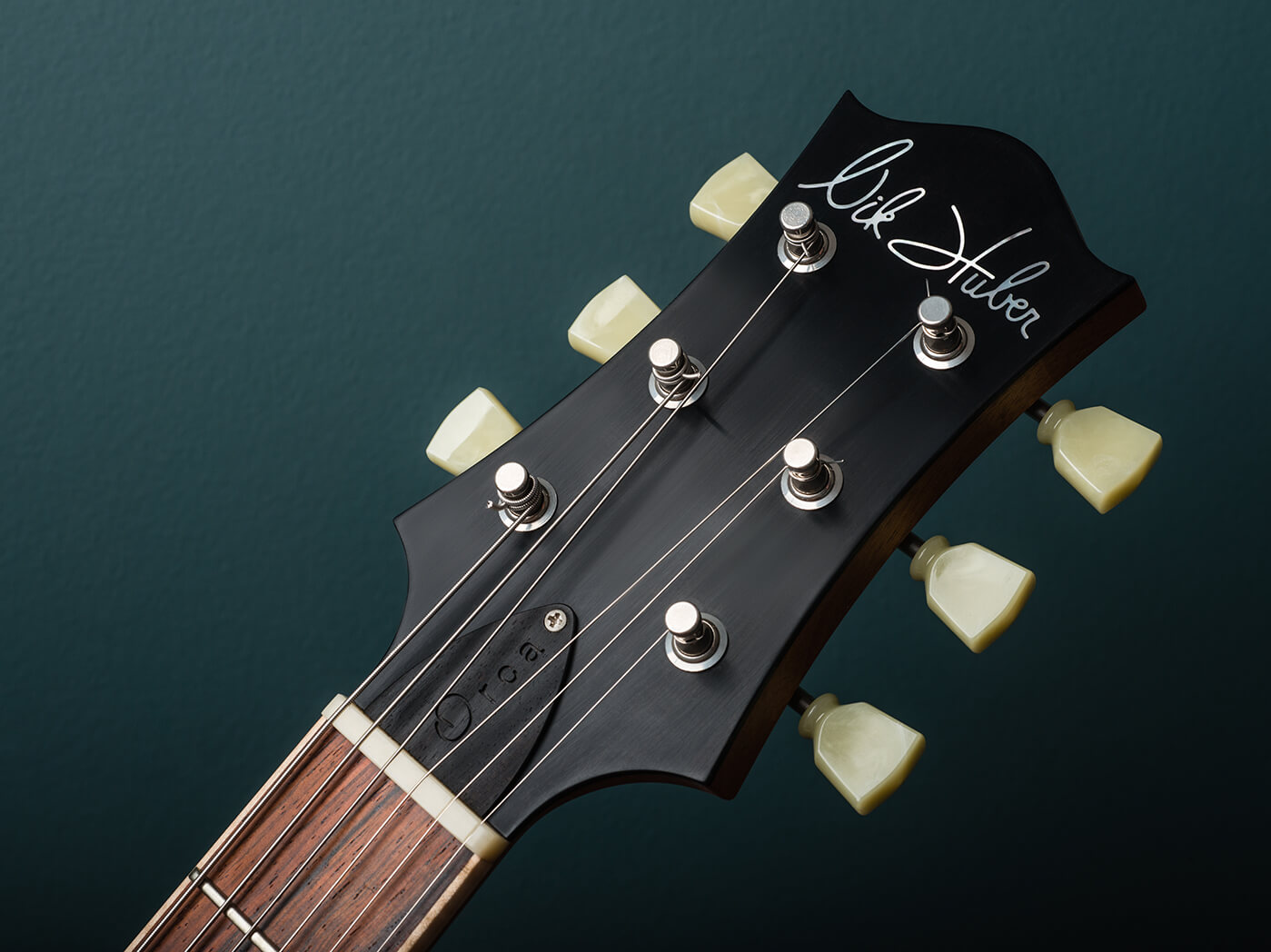
Additional hardware comprises Nik Huber logo’d open-gear Gotoh machineheads with tulip buttons, Schaller strap locks and an ABM tune-o-matic bridge and stop tailpiece. We’re not always the biggest fans of 15:1 ratio tuners and sometimes we miss the extra precision and smoother pitch transition of a higher gear ratio, but the Gotohs behave well enough here.
In use
An electric guitar’s unplugged performance usually provides a strong indication of its amplified character and this beautifully crafted machine doesn’t disappoint in either arena. Strummed acoustic chords leap out from a guitar that’s alive with top-to-toe resonance but never brash, and there’s a long, even decay with swirling harmonics.
It’s a similar story when plugged in. Some players find their first encounter with PAF-style pickups disconcerting as they don’t expect humbuckers to deliver such brightness, but housed in this Orca ’59, the Häussel units deliver plenty of bass and mid-muscle along with clear, complex trebles.
Swapping mahogany for Spanish cedar doesn’t seem to have diluted the Orca’s essential single-cut character to any significant degree. Add gain and it’s a soloist’s delight, with a ready array of vocal lead tones and killer wails – ranging from cocked-wah nasal to polished-granite smooth. It’s an instrument that likes the rough stuff, too, and Texans Grissom and Gibbons would both find plenty to appreciate.
Rather than using the coil-split mode to cop Fender tones, we find the hollow, breezy single-coil voices most useful for acoustic-guitar-style strumming. Roll back the volume a touch and it even does a passable impersonation of a J-160E. Versatile indeed.
Key Features
- PRICE £7,250 (inc. hard shell case)
- DESCRIPTION Six-string electric guitar. Made in Germany
- BUILD Spanish cedar body with figured maple top. Set mahogany neck with flame maple-bound 10-14” compound-radius Brazilian rosewood fingerboard (CITES certified) with mother of pearl inlays. 22 medium-jumbo frets. Double action (single rod, compressed) truss rod. Ebony headstock veneer, polished bone nut
- HARDWARE Gotoh open-gear machineheads with tulip buttons, ABM tune-o-matic bridge and aluminium stop tailpiece, Schaller strap locks
- ELECTRICS 2x Häussel 1959 humbucking pickups with aged nickel covers. 2x volume, 2x tone, 3-way toggle pickup selector switch. Pull neck pickup tone control for coil-split
- SCALE LENGTH 25”/635mm
- NECK WIDTH 41.6mm at nut, 52.1mm at 12th fret
- NECK DEPTH 23.6mm at first fret, 26.1mm at 12th fret
- STRING SPACING 34.1mm at nut, 52.2mm at bridge
- WEIGHT 3.33kg/7.34lb
- OPTIONS Contact dealer
- FINISH Faded Sunburst semi-gloss nitrocellulose
- CONTACT nikhuber-guitars.com, thenorthamericanguitar.com
Like this? Try these
- PRS McCarty SC 594 £3,599
- Patrick James Eggle Macon Singlecut £4,200
- Gibson Custom 60th Anniversary 1959 Les Paul Standard £5,199


